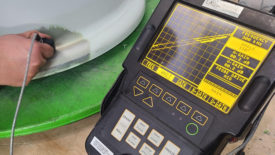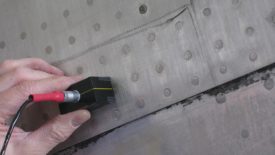Home » Keywords: » aircraft
Items Tagged with 'aircraft'
ARTICLES
Meet the 2024 Quality Rookie of the Year: Justin Wise
Always Looking for the Next Challenge and Continuous Improvement
April 10, 2024
From the Editor | Darryl Seland
Houston?! I Think We Have a Quality Control Problem
March 26, 2024
NDT | Inspection
Nondestructive Testing (NDT) of Commercial Aircraft Wheels
The main flaws uncovered by NDT on the wheels are cracking, corrosion, geometrical distortion, and overheating.
January 15, 2024
Test & Inspection
Eddy Current Inspection of In-Service Aircraft Structure
Eddy current inspections are particularly sensitive to crack, corrosion, and other conductivity changes within electrically conductive alloys.
April 1, 2022
Evolving Quality Processes Propel Growth
All inspectors are initially trained in first article inspection and then on assembly, sheet metal, and CMM inspection.
April 8, 2020
Stay in the know with Quality’s comprehensive coverage of
the manufacturing and metrology industries.
eNewsletter | Website | eMagazine
JOIN TODAY!Copyright ©2024. All Rights Reserved BNP Media.
Design, CMS, Hosting & Web Development :: ePublishing






